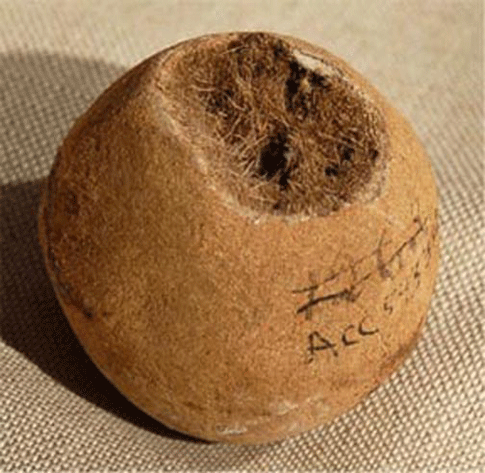Happy Hairball Awareness Day!
Swallow these facts on hairballs and other undigestibles

Hairballs aren’t just for cats anymore, and the National Museum of Health and Medicine wants to be sure America knows it. Really, truly, today is National Hairball Awareness Day. While there’s not yet a commemorative Hallmark card (we hope) there is a special presentation, and “hands-on” activity, at noon today at the Walter Reed Army Medical Center in Washington D.C.
Is this holiday not the handiwork of someone twisted? Here’s what you need to know:
- Hairballs don’t discriminate. Many animals other than cats—particularly cows, goats, and other cud-chewers—are susceptible to indigestible gunk accumulating in their stomachs. The stuff can’t squeeze past the narrow opening to the large intestine, and can become a ball that doctors call a bezoar. A hairball was once reported in a cow-preening chicken. And yes, people get them, too— usually kids who compulsively eat hair.
- They needn’t be made of hair. Your traditional hairball is technically called a trichobezoar. But they can also form in people from nondigestible food parts, like celery, grape skins, sauerkraut, or gum (making the rumored grave consequence of swallowing gum entirely possible). This version is called a phytobezoar. Diospyrobezoars are specialty phytobezoars made of persimmon parts. Pharmacobezoars form from amassed pill capsules. Doctors once even discovered a kid’s bezoar made of toilet paper.
- Hairballs were once treasured. Bezoar derives from the Persian pahnzehr, which means “antidote.” Introduced to Europe from the Middle East in the 11th century, ground-up hairballs from animals were reputed to cure poisoning, epilepsy, and the plague. In the Middle Ages, hairballs were cherished objets, set with gold and jewelry.
- The latest treatment involves a Coca-Cola stomach pump, and a glass a day thereafter. The carbonic and phosphoric acid in Coke can dissolve some bezoars made of food parts. But serious cases require surgery.
To see what the wide world of hairballs looks like, see the Museum’s online exhibit: Hairballs: Myths and Realities Behind Some Medical Curiosities. And steel your stomach.